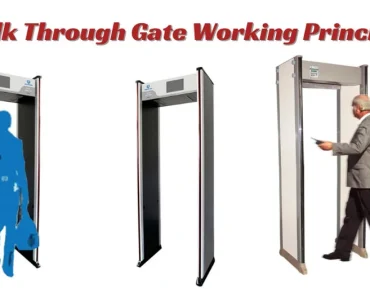Most home 3D printers work using a method called fused-deposition modeling (FDM) to make things. They move the printhead and print bed in three directions: side to side (X), forward and backward (Y), and up and down (Z), building up each part layer by layer. Different printers use different ways to move the printhead and other parts. For example, many printers use belts to move across the X and Y directions.
Belts in 3D printing are like flat, bendy straps that wrap around the printer’s frame in certain directions, usually X and Y. These belts have little grip on them, similar to how car tires grip the road. They’re kept in place by tensioners and holders on the printer’s moving parts.
Even though belts might seem like a small, simple part of your printer, how tight they are makes a big difference in how well your prints turn out. So, it’s important to understand how to adjust and take care of them properly.
What is the optimal tension for 3D Printer Belts?
Finding the perfect tension for the belts on your 3D printer is crucial. They need to be tight enough so there’s no looseness, yet still flexible. Picture it like a rubber band stretched just right. When you touch the belt, it should feel elastic, pushing back gently.
But be careful not to overdo it. Belts shouldn’t be overly tight. If they are, they’ll wear out faster and mess up your prints. It’s like finding a balance – the belt should give a bit when you press it down, but not stay slack when you release.
So, the trick is to adjust the tension until it feels just like that: firm but not too tight. This way, your printer works smoothly, and your prints turn out perfect.
Why make belts tight?
Even though belts might seem small on a 3D printer, they play a big role in getting good prints. If a belt is too loose, it can cause many problems with the print quality. For example, loose belts can make the layers of the print misaligned, which can make the print look shaky or even make it unusable.
When belts are loose, the parts might not be the right size because the belt has extra space to move around. This means that even though you designed the part with the right measurements, it might not fit or work like it’s supposed to.
If the belts are loose, the round features on your model might start to look more like ovals because the printer head has more space to move around. This means other shapes might not look right either. Loose belts can also cause wavy patterns on the sides of the print when the printer head moves between layers, as seen in tests done by CHEP on YouTube.
So, why not just tighten the belts before using the printer each time? Well, too much tension can also cause problems, but they’re more about the belt’s lifespan rather than the printing quality.
Firstly, if you tighten the belt too much, it might break suddenly. But even if it doesn’t break, keeping the belts too tight can make them wear out faster. Stretching a belt too much can’t be undone, so you’ll end up with loose belts again eventually.
How to Make Your 3D Printer Belts Tight
Now that you know how important it is to have your belts at the right tension, let’s talk about how you can do it yourself. Different 3D printers might need slightly different steps, but the main idea is the same.
Here’s a simple guide to tightening your 3D printer belts:
1. Find where the belt tensioner is located on one end of the axis where you need to tighten the belt.
2. If the tensioner is connected directly to the axis, you’ll need to loosen it using the right tool, like an Allen key or a screwdriver. If the tensioner has a knob for adjusting tension, turn it clockwise to tighten the belt.
3. Once the tensioner is loose, hold onto the frame with one hand. With a good grip, pull the tensioner in the direction that will make the belts tighter (away from the moving part).
4. Keep holding the tensioner in that position while you let go of the frame. Then, use your other hand to tighten or reattach the tensioner to the frame.
5. That’s it! Remember to check and tighten all the belts on your printer, not just one axis.
By following these steps, you can make sure your 3D printer’s belts are nice and tight, helping it to work smoothly and produce great prints.
Problems with Loose Belts
When your printer’s belts aren’t tensioned correctly, it can cause layer shifting in your prints. This means the layers in your print might not line up properly.
If your belts are too loose, they might slip on the pulley cog. This makes the belt move without moving the print head.
When the belt slips, it causes a small delay in movement, which affects the position of the printer nozzle. Once the belt catches again, the print continues normally.
Having the right belt tension is important for getting accurate shapes in your prints. If the belt is too loose, it might not respond quickly when the printer changes direction. This can result in less precise prints. But if the belts are adjusted correctly, you won’t notice this problem.
Problems Arising from Tight Belt Tension
When belts are too tightly pulled, they might not immediately cause issues with printing quality. However, the increased tension puts extra strain on the belt, causing it to wear out faster and reducing its lifespan.
Most belts are made from a combination of rubber and reinforced with cords, usually made of steel. These cords add strength to the belt and make it more reliable.
If you tighten the belt too much, it could end up getting stretched. Once a belt stretches, there’s no going back to its original shape.
Stretching the belt can also knock it out of alignment with the cog, which might cause it to slip.
In severe instances, an overly tightened belt can snap like a rubber band. Not only does this cause damage to the printer, but it also poses a risk of injury.
How to Adjust 3D Printer Belt Tension for Better Prints
Here’s an easier way to understand how to adjust your 3D printer’s belt tension:
If your 3D printer, like the Ender 3 V2, has a knob for belt tension adjustment, you’re in luck! Just turn the knob to make the belt tighter or looser without having to take anything apart.
But if your printer doesn’t have this feature, don’t worry. You can still add a 3D-printed belt tension adjuster to the frame. There are lots of designs available online, and we’ve listed a few below for popular printers like the CR-10, Ender 3, Anycubic i3 Mega, and Anet A8. If you’re feeling creative, you can even design your own or modify an existing model.
Now, how do you know if your belt is properly tensioned? It should be tight enough that the printhead or bed moves smoothly and without shaking. If it feels shaky, tighten the belt. If the movement is jerky, loosen it up a bit.
Remember, adjusting your printer’s belt tension can help improve the quality of your prints, so it’s worth taking the time to get it right.
SelfCAD: Best 3D Printing Software in 2024
SelfCAD is an online and downloadable 3D model maker tool that helps you make 3D models. Whether you’re just starting or you’re already an expert, SelfCAD is made for you. Its simple interface makes it easy to use, especially for beginners. What’s cool about SelfCAD is that it combines all the tools you need for technical stuff, artistic designs, and even 3D printing into one single program. It’s like having everything you need in one toolbox!
But that’s not all. SelfCAD also lets you make simple animations. Plus, there’s a handy feature called a 3D slicer. This tool helps you prepare your 3D models for printing. And if you’re ever stuck or need help, there are lots of tutorials on their website and YouTube channel to guide you along the way.
Now, let’s talk about creating from scratch. SelfCAD has tools for freehand drawing and sketching, which means you can start with a blank canvas and let your imagination run wild. There’s even a feature that turns your photos into 3D models with just a click!
You can use SelfCAD for free, but there are also paid options with more features. With the free version, you get access to all the tools, but some of the fancier stuff is limited. So whether you’re a beginner or a pro, SelfCAD has got you covered!
Conclusion:
In conclusion, setting the tension belt correctly on a 3D printer is crucial for ensuring optimal performance and print quality. By following the proper steps and guidelines, users can prevent issues such as belt slipping, misalignment, and poor print accuracy. Proper tensioning helps maintain consistent motion and precise positioning of the print head, resulting in smoother prints with greater detail and accuracy. Regularly checking and adjusting the tension belt as needed will help prolong the lifespan of the printer and ensure reliable operation over time. With attention to detail and care in tensioning, users can maximize the capabilities of their 3D printer for successful and satisfying prints.
Read Also: Alignment Cubes





